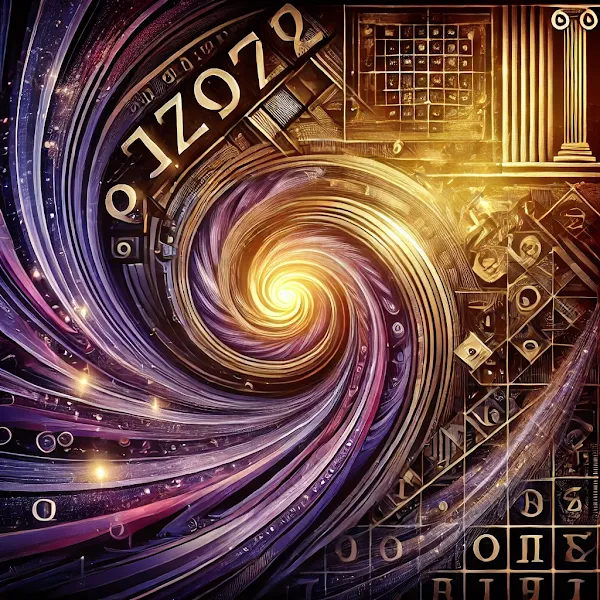GNC/K: Greek Numeral Converter/Keyboard
Greek Numeral Converter
INPUT
15 digits (hundred trillion) maximum and positive integer.
GNC converts modern Arabic (international) numeral ➡️ Greek numeral.
Greek Numeral Keyboard
INPUT KEYBOARD
15 digits (hundred trillion) maximum.
GNK converts Greek numeral ➡️ Arabic (international) numeral.
The keyboard input system isn't like the decimal system we use everyday, this has different sequence. Therefore, in order to filter incorrect input, it will just add the number value from the clicked button.
Greek Numeral List
Method
Ancient Greek system is unlike today's numeral system (modern Arabic — using 0-9), and it's using Greek letter (numeral). And, to differentiate it from actual letter to form a number instead of word, they use the apostrophe look-alike symbol behind the number sequence (right side). The symbol is called keraia (κεραία).
They have M, as in myriad, for the power of 10,000. It's unlike M (mille) in Roman numerals, which is 1,000.
This is how we write one thousand, two hundred and thirty-four (1,234) — the arithmetic:
1,234 = [1 × 103] + [2 × 102] + [3 × 101] + [4 × 100] = 1,000 + 200 + 30 + 4.
In ancient Greek numeral system, they have letter representation for each number up until 9,000 (from the table above) — not simply 0-9. Hence, a bit different in the arithmetic pattern.
The ancient Greek number for 1,234 is ͵ασλδʹ — goes like this:
͵ασλδʹ = ͵α + σ + λ + δ
͵ασλδʹ = [1,000] + [200] + [30] + [4]
The original formatting for myriad applies the superscript writing, with the numbers (multipliers) are placed above the M letter. The tool above simply rises the numbers position a bit and put color on them to indicate the myriad part.
Side note, M = 10,000. M is myriad.
Examples
- 1 ➡️
αʹ - 12 ➡️ 10 + 2 ➡️
ιβʹ - 123 = 100 + 20 + 3 ➡️
ρκγʹ - 1,234 = 1,000 + 200 + 30 + 4 ➡️
͵ασλδʹ - 12,345 = [10,0001 × 1] + 2,000 + 300 + 40 + 5 ➡️
αMα͵βτμεʹ - 123,456 = [10,0001 × (10 + 2)] + 3,000 + 400 + 50 + 6 ➡️
αMιβ͵γυνϛʹ - 1,234,567 = [10,0001 × (100 + 20 + 3)] + 4,000 + 500 + 60 + 7 ➡️
αMρκγ͵δφξζʹ
As you can see from the 3 last examples, each has myriad in it. The alpha before the myriad is the exponent or power, in this case 1 (α). So it has 10,0001. If the value is one hundred million, for instance 100,000,000 ➡️ βMαʹ (beta myriad alpha) ➡️ 10,0002 × 1 = 100,000,000.
Because this isn't using pen and paper, let's try to read the un-formatted number...
Keep in mind, if there's M, then the letter before M will be used as the exponent.
If there's one M and no letter written before it (on left side), meaning 10,000 powered by α (1).
Like 1x or 1a is written simply as x or a.
Once more, M = 10,000.
βM͵ααM͵α͵αιαʹ
There's β (2) in front of first M and α (1) in front of second M.
Group it: (βM͵α) (αM͵α) (͵αια)ʹ
Break it down:
➡️ [Mβ × ͵α] + [Mα × ͵α] + ͵α + ι + α
Substitute each letter with its value from the table:
β = 2
͵α = 1,000
α = 1
ι = 10
➡️ [10,0002 × 1,000] + [10,0001 × 1,000] + 1,000 + 10 + 1
➡️ 100,000,000,000 + 10,000,000 + 1,000 + 10 + 1
➡️ 100,010,001,011
➡️ One hundred billion, ten million, one thousand, eleven.
Also can be written as M͵αM͵α͵αιαʹ (without the exponent in front of M, semi-formatted).
αMιε͵βραʹ
There's α (1) in front of first M.
Group it: (αMιε) (͵βρα)ʹ
Break it down:
➡️ [Mα × (ι + ε)] + ͵β + ρ + α
Substitute each letter with its value from the table:
ι = 10
ε = 5
α = 1
͵β = 2,000
ρ = 100
➡️ [10,0001 × (10 + 5)] + 2,000 + 100 + 1
➡️ 150,000 + 2,000 + 100 + 1
➡️ 152,101
➡️ One hundred and fifty-two thousand, one hundred and one.
Also can be written as Mιε͵βραʹ (without the exponent in front of M, semi-formatted).
Pay attention on how the grouping technique works for letter surrounding the M (10,000) above. The multiplier sequence for Myriad: thousands ➡️ hundreds ➡️ tens ➡️ ones.
Like so: exponent M [thousands, hundreds, tens, ones]
͵αφοʹ
We don't need to group it, it doesn't have myriad part.
Break it down:
➡️ ͵α + φ + ο
Substitute each letter with its value from the table:
φ = 500
ο = 70
➡️ 1,000 + 500 + 70
➡️ 1,570
➡️ One thousand, five hundred and seventy.
As you would probably notice, the power (exponent) notation is the opposite version of what we use nowadays. We (left to right international writing system) directly use 106 for 1,000,000, but not in Greek numeral. It has right to left writing system feeling, because it was indeed taken from Phoenician's system (right to left). This is a post about alphabet on Monkey Raptor.
The Alphabētos 🪓
